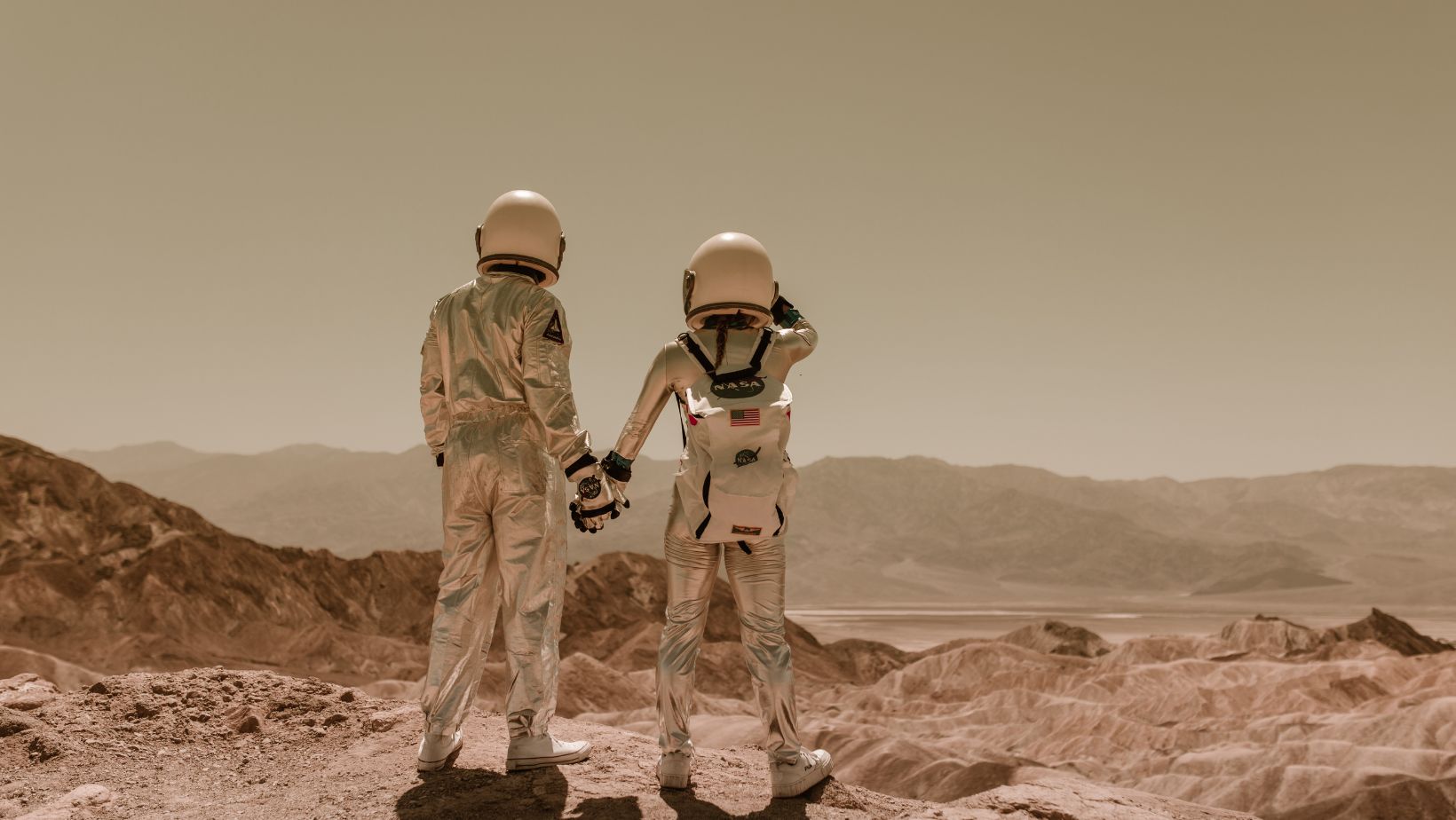
Top Science Fiction Story Writing Examples to Spark Your Creative Imagination
Science fiction has this incredible ability to transport us to worlds beyond our imagination. As a writer, I’ve always found it fascinating how a well-crafted story can blend technology, adventure, and human emotion into something truly captivating. Whether it’s exploring distant galaxies or delving into the complexities of artificial intelligence, the possibilities are endless.
In this article, I’ll share some compelling examples of science fiction storytelling that not only entertain but also provoke thought. These examples highlight various styles and themes that can inspire your own writing journey. So if you’re ready to dive into the cosmos of creativity, let’s explore how these stories can ignite your imagination and help you craft your own unique narrative.
Key Takeaways
- Definition and Appeal: Science fiction blends technology, adventure, and human emotion, captivating readers with imaginative and thought-provoking narratives.
- Key Elements: Essential components of successful sci-fi include world-building, scientific accuracy, imagined technology, character development, and engaging themes.
- Classic Influences: Iconic authors like Isaac Asimov and Philip K. Dick have shaped the genre, offering timeless insights into human experiences and societal dilemmas through their works.
- Contemporary Evolution: Modern sci-fi embraces diverse voices and themes, addressing issues such as climate change, technology’s dual nature, and the exploration of identity and humanity.
- Narrative Techniques: Effective storytelling in sci-fi often employs non-linear structures and layered characterization, enhancing emotional connections and challenging readers’ perceptions.
- Practical Advice: Writers should focus on creating unique worlds and balancing scientific principles with imaginative storytelling to enrich their narratives and engage audiences effectively.
Science Fiction Story Writing Examples
Science fiction captivates readers by blending technology, adventure, and human emotion. This genre allows exploration of imaginative concepts and thought-provoking scenarios.
What Defines Science Fiction?
Science fiction centers on speculative concepts. These include advanced science, technology, space exploration, time travel, and alternate realities. It often examines the impact of these elements on society and individuals. Crucial themes involve ethical dilemmas, existential questions, and the consequences of innovation. Classic examples feature works like Isaac Asimov’s “”Foundation”” series and Philip K. Dick’s “”Do Androids Dream of Electric Sheep?””.
Key Elements of Science Fiction Writing
Key elements contribute to compelling science fiction narratives. Essential components include:
- World-Building – Crafting detailed and plausible settings enhances immersion. Engaging worlds incorporate unique laws of physics, social structures, and cultures.
- Scientific Accuracy – Grounding speculative ideas in real science adds credibility. Incorporating accurate scientific principles invites readers to consider the possibilities within the realm of the plausible.
- Imagined Technology – Futuristic devices and innovations shape stories. These can range from advanced AI systems to interstellar travel methods, creating intrigue and excitement.
- Character Development – Complex characters drive narratives and explore human experiences. Their emotional journeys and moral conflicts resonate amidst the backdrop of extraordinary circumstances.
- Themes and Morals – Addressing significant social, political, and ethical themes enriches the narrative. Thought-provoking questions challenge readers to reflect on contemporary issues through a speculative lens.
Classic Science Fiction Examples
 Classic science fiction stories offer timeless insights into the human experience through imaginative storytelling. These examples often shape the genre, influencing writers and readers alike.
Classic science fiction stories offer timeless insights into the human experience through imaginative storytelling. These examples often shape the genre, influencing writers and readers alike.
Notable Authors and Their Works
- Isaac Asimov: Known for the “”Foundation”” series, Asimov explores the rise and fall of civilizations through the lens of psychohistory, a fictional science blending history and mathematics.
- Philip K. Dick: His novel “”Do Androids Dream of Electric Sheep?”” raises questions about human identity and machine consciousness, reflecting societal concerns related to technology and ethics.
- Arthur C. Clarke: “”2001: A Space Odyssey”” combines space exploration with philosophical undertones, introducing the concept of artificial intelligence in a thought-provoking manner.
- Ray Bradbury: “”Fahrenheit 451″” critiques censorship and dystopian futures, emphasizing the importance of literature and free thought in society.
- H.G. Wells: “”The War of the Worlds”” stands as an early example of alien invasion narratives, blending realism with speculative scenarios that challenge perceptions of humanity.
Impact on the Genre
Classic science fiction has transformed the landscape of literature, serving as a foundation for modern storytelling. Works by these authors set benchmarks for world-building and thematic exploration. They inspire new generations of writers to push the boundaries of imagination and engage with complex societal issues. Classic narratives often serve as reference points, confirming the genre’s potential to tackle philosophical inquiries and technological advancements.
Contemporary Science Fiction Examples
Contemporary science fiction showcases a variety of styles that push boundaries and explore current societal issues. Writers today blend imaginative narratives with pressing themes, captivating a new audience.
Emerging Authors to Watch
- Nnedi Okorafor: Okorafor’s work includes “”Binti,”” a series that merges African culture with space travel. Her narratives often explore identity and the intersection of tradition and technology.
- Ted Chiang: Chiang’s short stories, like “”Story of Your Life,”” delve into complex ideas such as language and determinism. His thought-provoking writing encourages readers to contemplate deeper existential questions.
- Seanan McGuire: McGuire’s “”October Daye”” series seamlessly combines urban fantasy and science fiction elements. Her focus on character development and innovative world-building engages diverse readers.
- Yoon Ha Lee: Lee’s “”Machineries of Empire”” series incorporates intricate plotting and mathematics within a space opera framework. His unique narrative style enriches the genre with fresh concepts.
- Rebecca Roanhorse: Roanhorse, author of “”Trail of Lightning,”” infuses Indigenous culture into speculative fiction. Her works challenge conventional tropes, showcasing alternative narratives that resonate widely.
- Diversity and Inclusion: Contemporary science fiction increasingly embraces diverse voices and perspectives. This shift broadens representation and enriches storytelling across the genre.
- Climate Change: Many contemporary narratives address environmental issues, emphasizing the impact of climate change on society. Authors explore potential futures resulting from current ecological challenges.
- Technology’s Duality: Writers examine both the benefits and pitfalls of technological advancements. Stories often highlight the ethical dilemmas associated with artificial intelligence and biotechnology.
- Identity and Humanity: The exploration of identity remains a central theme. Authors question the nature of humanity in an age of algorithms and genetic manipulation, prompting reflection on what it means to be human.
- Speculative Futures: Innovative world-building creates thought-provoking scenarios that encourage readers to consider potential futures. Writers envision varied outcomes based on humanity’s choices today, fostering discussion about ethics and morality.
Analyzing Science Fiction Stories
Analyzing science fiction stories reveals how structure, plot, and characterization work together to create compelling narratives. This genre relies heavily on imaginative frameworks while remaining grounded in human experiences and societal reflections.
Structure and Plot Development
Effective science fiction stories often employ non-linear structures, allowing for complex narratives. Many authors utilize techniques such as flashbacks, parallel timelines, and multiple points of view to enrich their plots. A strong example is Octavia Butler’s Kindred, where time travel serves as a mechanism for examining racial dynamics in the past and present.
Moreover, a well-defined plot usually contains clear inciting incidents that set off the chain of events leading to climax and resolution. Consider the plot of The Martian by Andy Weir, where an astronaut’s survival on Mars becomes a battle against insurmountable odds, meshing scientific authenticity with tension-filled storytelling. In addition, intertwining subplots often help to build relationships, elaborate on themes, and deepen the reader’s investment in the characters’ journeys.
Characterization in Science Fiction
Characterization plays a crucial role in science fiction, where relatable characters navigate extraordinary circumstances. Unique traits presented through vivid backstories and distinct personalities enhance readers’ emotional connections. For instance, in Dune by Frank Herbert, the multi-faceted characters, such as Paul Atreides, embark on personal and political journeys, reflecting profound themes of power and destiny.
Furthermore, layered characters successfully depict the moral dilemmas faced within speculative settings. Works like Neuromancer by William Gibson illustrate how characters can mirror societal issues like identity, technology, and humanity’s relationship with it.
Creating well-rounded characters often includes their responses to futuristic technology or alien societies, showcasing human resilience and ethical considerations. These dynamics not only propel the plot but also invite readers to reflect on themselves and their values in a rapidly changing world.
Practical Tips for Writing Science Fiction
Creating compelling science fiction involves distinct strategies. Employing these practical tips enhances storytelling and ignites imagination.
Developing Unique Worlds
Crafting unique worlds requires intricate attention to detail. Establish rules governing the world, such as its geography, culture, and technology. Consider the implications of these rules on characters and plot. Use sensory descriptions to immerse readers, enabling them to visualize the environment. For instance, an arid desert planet might feature vibrant flora adapted to extreme conditions, influencing how characters interact with their surroundings. Incorporate societal structures, languages, and customs that reflect the world’s unique attributes. The depth of your world allows readers to suspend disbelief and fully engage in the narrative.
Balancing Science and Fiction
Balancing science and fiction involves an understanding of real scientific principles while allowing for imaginative liberties. Research scientific concepts relevant to your story, whether they pertain to advanced technology or natural phenomena. Ensure that these elements feel plausible within the narrative’s context. For example, integrating quantum physics into a time travel narrative demands clarity in mechanics to maintain coherence. Don’t shy away from stretching the boundaries of current scientific understanding, but ensure that your inventions align with the established logic of the world. This balance enriches the reading experience and invites readers to explore the possibilities within your narrative.
Science fiction offers a unique lens through which we can explore profound themes and societal issues. I’ve found that the genre not only entertains but also challenges us to think critically about our world and the future.
As I dive into both classic and contemporary works, I’m continually inspired by the creativity and depth of storytelling. Whether it’s through intricate world-building or complex characters, there’s always something new to discover.
For anyone looking to craft their own science fiction narratives, remember to embrace imagination while grounding your story in relatable human experiences. This balance can lead to compelling tales that resonate with readers and spark meaningful conversations.
